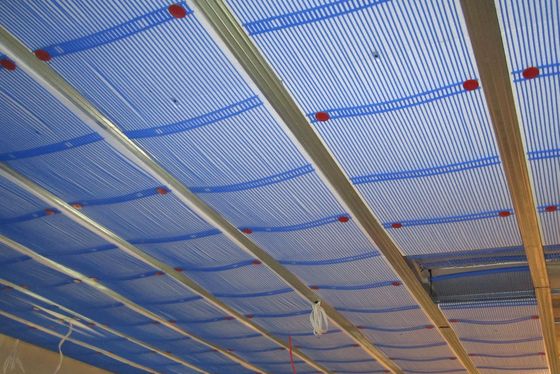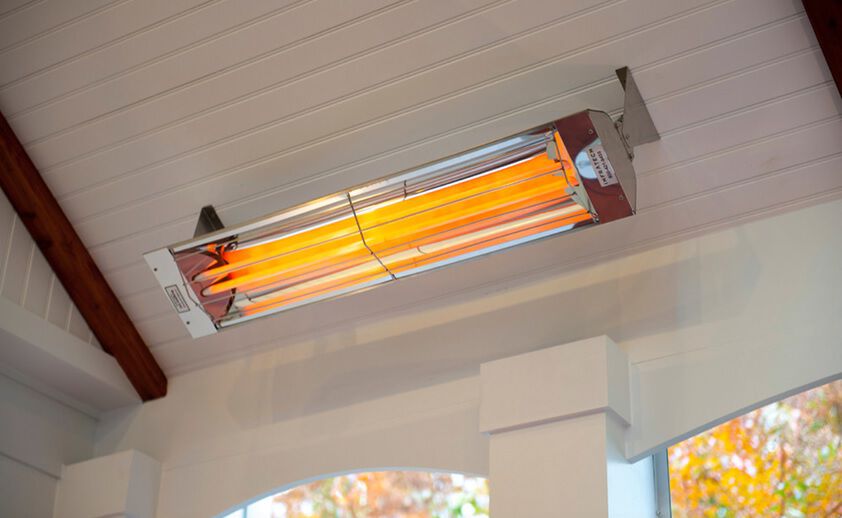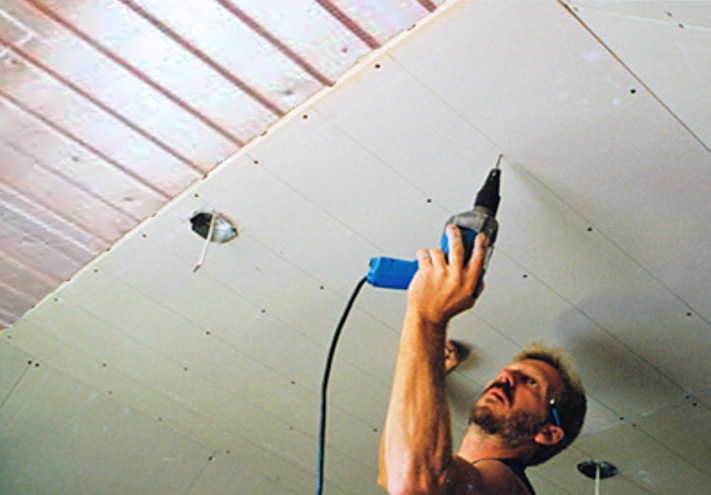When it comes to home heating solutions, finding an efficient, space-saving, and cost-effective option is essential. A Ceiling Mount Gas Heater can be the perfect solution for those seeking to heat large spaces efficiently without taking up valuable floor space. Whether you are looking to warm up your garage, workshop, warehouse, or even a large living area, ceiling-mounted gas heaters offer numerous benefits. These heaters are designed to save space, reduce clutter, and provide effective heating where it’s needed most.

In this article, we will dive deep into what a Ceiling Mount Gas Heater is, how it works, its advantages, and tips on selecting the right one for your space. We’ll also discuss the installation process, safety considerations, and maintenance to ensure your heater works efficiently for years.
What is a Ceiling Mount Gas Heater?
A Ceiling Mount Gas Heater is a type of heating system that is installed on the ceiling of a room or space. This type of heater uses gas, typically natural gas or propane, as its fuel source to generate heat. The warmth generated is then distributed throughout the space via a combination of convection and radiation.
Read too: Discovering the Charm of Nautical Outdoor Ceiling Fans for Your Coastal Retreat: Sail into Style
Unlike traditional heaters that take up floor space, Ceiling Mount Gas Heaters are mounted high on the ceiling, saving valuable space in your home or business. They are commonly used in large, open areas such as garages, warehouses, factories, workshops, and even commercial spaces where heating needs are higher, and floor space is limited.
Key Features:
- Space-Saving Design: These heaters are installed high on the ceiling, so they don’t occupy valuable floor space.
- Efficient Heating: They use gas to generate heat, which can be more economical than electric heating, especially in larger areas.
- Quick Heat Distribution: Ceiling-mounted gas heaters distribute heat evenly across a room, making them ideal for large, open spaces.
How Does a Ceiling Mount Gas Heater Work?
A Ceiling Mount Gas Heater operates using the principle of convection, where the heated air rises and circulates throughout the room, warming up the space. Here’s a breakdown of how the system works:
1. Gas Combustion:
The heater uses gas (typically natural gas or propane) to fuel the burner. The combustion process generates heat, which is then transferred to the surrounding air.
2. Heat Distribution:
Once the air is heated, it begins to rise toward the ceiling. Because the heater is mounted high, the warm air is released from the top and spreads across the room.
3. Thermostat Control:
Most modern Ceiling Mount Gas Heaters come with a built-in thermostat that allows you to control the temperature. The thermostat ensures that the room remains at a consistent temperature, providing comfort without overheating or wasting energy.
4. Airflow:
Many ceiling-mounted heaters come with fans or blowers to help circulate the heated air more efficiently. This ensures that warm air reaches every corner of the room, preventing cold spots and keeping the temperature uniform.
Advantages of a Ceiling Mount Gas Heater
The Ceiling Mount Gas Heater offers several advantages over traditional heating systems. Here are some key reasons why homeowners and business owners are turning to ceiling-mounted gas heaters for their heating needs:
1. Space Efficiency
One of the biggest advantages of installing a ceiling-mounted gas heater is the space-saving design. Since it is mounted on the ceiling, it doesn’t take up any valuable floor space. This makes it ideal for small spaces or rooms with limited floor area.
2. Cost-Effective
Gas heating is generally more cost-effective than electric heating, especially in large areas. Ceiling Mount Gas Heaters use gas, which is typically cheaper than electricity. If you’re heating a large garage or warehouse, the savings in energy costs can add up quickly.
3. Even Heat Distribution
Because the heater is mounted on the ceiling, the heat rises and circulates throughout the room more efficiently. This ensures that the space is heated evenly, with fewer cold spots. Additionally, the natural airflow in the room allows the heater to warm up the space faster compared to other heating methods.
4. Ideal for High Ceilings
Many commercial spaces or industrial buildings have high ceilings, which can make it difficult to heat the area evenly with traditional heaters. A Ceiling Mount Gas Heater solves this issue by being mounted high up where it can distribute heat effectively across the room.
5. Minimal Maintenance
Ceiling-mounted gas heaters are low maintenance, requiring only occasional checks for gas connections and general upkeep. Many models also come with built-in safety features like automatic shut-off valves to prevent overheating.
Factors to Consider When Choosing a Ceiling Mount Gas Heater
When selecting a Ceiling Mount Gas Heater, there are several factors to keep in mind to ensure you get the best unit for your specific needs:
1. Size of the Area
The size of the room or space you need to heat is one of the most important factors to consider. For larger spaces, such as warehouses or factories, you’ll need a more powerful heater with a higher BTU (British Thermal Unit) rating. A BTU rating indicates the amount of heat a heater can produce. Make sure to choose a unit that can efficiently heat the entire area.
2. Gas Type
Ceiling-mounted gas heaters typically use either natural gas or propane. Natural gas is often the preferred choice if you have a gas line already installed in your home or business, but propane can be used in areas without access to a natural gas line.
3. Energy Efficiency
Look for energy-efficient models that have high ratings for fuel consumption. Energy-efficient Ceiling Mount Gas Heaters will help you save money on your energy bills while providing consistent heat. Models with thermostats that adjust the temperature based on the room’s needs are ideal for maintaining efficiency.
4. Installation Requirements
Proper installation is crucial for the safety and efficiency of your Ceiling Mount Gas Heater. Ensure that the unit is installed by a licensed professional to meet local building codes and safety standards. The installation process will depend on the type of heater, the size of your space, and the gas source available.
5. Safety Features
Safety is always a priority when dealing with gas heaters. Ensure that the unit you choose has safety features like automatic shut-off valves, overheat protection, and flame failure sensors to prevent accidents and malfunctions.
Installation Process for Ceiling Mount Gas Heaters
The installation of a Ceiling Mount Gas Heater should always be handled by a professional to ensure that it is done safely and correctly. Here’s a general overview of the installation process:
1. Location Selection
The first step is choosing the right location for the heater. The heater should be mounted on a flat, stable surface, ideally in the center of the room. The area should also be free of obstructions and provide enough clearance for the heater to function properly.
2. Gas Line Connection
If your building does not already have a gas line, one will need to be installed to connect the heater. This step must be completed by a licensed professional plumber or gas technician to avoid gas leaks or other hazards.
3. Mounting the Heater
The heater is then mounted securely on the ceiling using brackets or other mounting hardware. Proper mounting ensures that the heater remains stable and works efficiently without the risk of falling.
4. Electrical Connection
Some models may require electrical connections for the fan or thermostat. This step will also be performed by a licensed technician to ensure proper wiring and avoid any electrical hazards.
5. Testing the Heater
Once installed, the heater will be tested to ensure that it is working properly and that all safety features are functioning. The technician will check for gas leaks, proper heat distribution, and overall system efficiency.
Maintenance and Care for Ceiling Mount Gas Heaters
Proper maintenance is key to ensuring the longevity and efficiency of your Ceiling Mount Gas Heater. Here are some tips for maintaining your heater:
1. Check for Gas Leaks
Regularly inspect the gas lines and connections for any signs of leaks. If you smell gas or notice any unusual odors, contact a professional immediately.
2. Clean the Unit
Dust and debris can accumulate on the heater, affecting its performance. Clean the exterior and vents regularly to ensure proper airflow.
3. Test the Thermostat
Make sure the thermostat is working correctly and maintains the temperature you set. Replace batteries or perform any necessary adjustments to ensure consistent performance.
4. Annual Professional Inspections
Schedule annual professional inspections to ensure that your heater is functioning at optimal efficiency and safety. A technician will check for any potential issues, perform cleaning, and ensure all parts are in working order.
Conclusion
A Ceiling Mount Gas Heater is an excellent choice for homeowners and businesses looking for an efficient, space-saving heating solution. With benefits like even heat distribution, low maintenance, and cost savings, these heaters are an ideal option for large spaces. By considering factors like space size, gas type, and safety features, you can find the perfect unit for your needs. Always ensure that the installation and maintenance are handled by professionals to keep your heater operating safely and efficiently for years to come.
Whether you’re heating a large garage, warehouse, or workshop, a Ceiling Mount Gas Heater can provide reliable and cost-effective warmth, ensuring that your space stays comfortable during the colder months.




